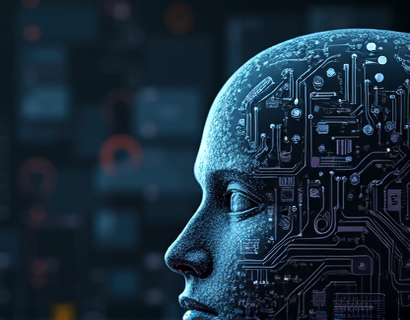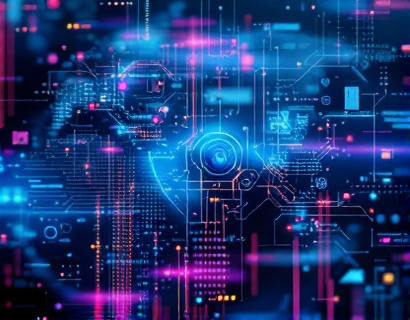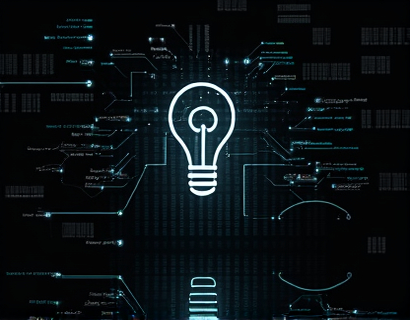AI and Crypto Synergy: Revolutionizing Digital Ecosystems for Innovators
The intersection of Artificial Intelligence (AI) and Cryptocurrency (Crypto) is giving rise to a new era of digital ecosystems, offering unprecedented opportunities for innovators. This synergy is not just about combining two advanced technologies but about creating a transformative environment where traditional boundaries are redefined. The fusion of AI and crypto is revolutionizing how we interact with digital applications and services, opening doors to new possibilities in security, efficiency, and user experience.
Understanding the Basics
To fully grasp the potential of AI and crypto synergy, it's essential to understand the fundamental concepts of both technologies. Artificial Intelligence, a branch of computer science, focuses on creating systems that can perform tasks requiring human intelligence, such as learning, reasoning, and self-correction. On the other hand, cryptocurrency is a digital or virtual currency that uses cryptography for security and operates on a decentralized network, most notably blockchain technology.
Blockchain, the backbone of crypto, is a distributed ledger that records transactions across multiple computers in such a way that the registered transactions cannot be altered retroactively. This technology ensures transparency, security, and immutability, making it an ideal foundation for various applications beyond currency, including smart contracts, supply chain management, and identity verification.
AI in Crypto: Enhancing Security and Efficiency
One of the most significant impacts of AI on the crypto space is in the realm of security. Traditional security measures often struggle to keep pace with the evolving landscape of cyber threats. AI algorithms, with their ability to analyze vast amounts of data in real-time, can detect and respond to anomalies and potential threats more effectively. For instance, machine learning models can identify patterns indicative of fraudulent activities, such as unusual transaction volumes or suspicious account behaviors, allowing for proactive measures to be taken.
Moreover, AI enhances the efficiency of crypto operations. Smart contracts, self-executing contracts with the terms directly written into code, can be optimized using AI to reduce execution times and minimize errors. AI-driven bots can automate trading strategies, analyze market trends, and execute trades with precision, providing a competitive edge in the fast-paced crypto markets.
Crypto-Powered AI Applications
The integration of crypto into AI applications brings a new dimension of decentralization and transparency. Decentralized finance (DeFi) platforms, for example, leverage AI to offer financial services without intermediaries, reducing costs and increasing accessibility. AI algorithms can predict market movements, optimize portfolio management, and provide personalized financial advice, all within a decentralized framework that ensures data ownership and privacy.
In the realm of identity verification, AI and crypto combine to create secure and user-controlled identity solutions. Self-sovereign identity systems allow individuals to manage their digital identities, granting or revoking access to services as needed. This not only enhances security but also empowers users by giving them control over their personal data.
Innovative Business Models
The synergy between AI and crypto is giving birth to innovative business models that disrupt traditional industries. One such model is the tokenized economy, where tokens represent assets or utility within a decentralized ecosystem. AI can optimize the allocation and valuation of these tokens, ensuring fair distribution and efficient market dynamics. This model is particularly transformative in areas like gaming, where in-game assets can be truly owned and traded, creating new revenue streams for developers and players alike.
Another innovative approach is the use of AI-driven predictive analytics in crypto projects. By analyzing historical data and market trends, AI can forecast future price movements and network activities, helping projects make informed decisions about development, marketing, and strategic partnerships. This data-driven approach can significantly enhance the success rate of crypto initiatives.
Challenges and Considerations
Despite the numerous benefits, the integration of AI and crypto is not without challenges. Regulatory uncertainties remain a significant hurdle, as governments worldwide grapple with how to classify and regulate these emerging technologies. Compliance with varying legal frameworks is crucial to avoid legal pitfalls and ensure sustainable growth.
Technical complexity is another consideration. Developing AI-powered crypto solutions requires a high level of expertise in both domains. Innovators need to invest in skilled teams or partnerships to navigate the intricate landscape of AI development and blockchain technology. Additionally, the computational resources required for AI training and blockchain operations can be substantial, necessitating efficient and cost-effective solutions.
Future Prospects
The future of AI and crypto synergy is promising, with ongoing advancements poised to unlock even more potential. The development of more sophisticated AI models, such as generative adversarial networks (GANs) and reinforcement learning, can further enhance the capabilities of crypto applications. These technologies can create more realistic simulations, improve predictive accuracy, and enable more complex interactions within decentralized systems.
Interoperability between different blockchain platforms and AI systems is another area of focus. Standardization efforts and cross-chain solutions will facilitate seamless integration, allowing for a more cohesive and robust digital ecosystem. This interoperability will enable the creation of hybrid solutions that leverage the strengths of both AI and crypto, driving innovation across various sectors.
Conclusion
The fusion of AI and crypto is revolutionizing digital ecosystems, offering innovators powerful tools to enhance security, efficiency, and user experience. By embracing this synergy, businesses and developers can tap into new opportunities, create groundbreaking applications, and shape the future of technology. As the landscape continues to evolve, staying informed and adaptable will be key to thriving in this exciting and dynamic field.











































